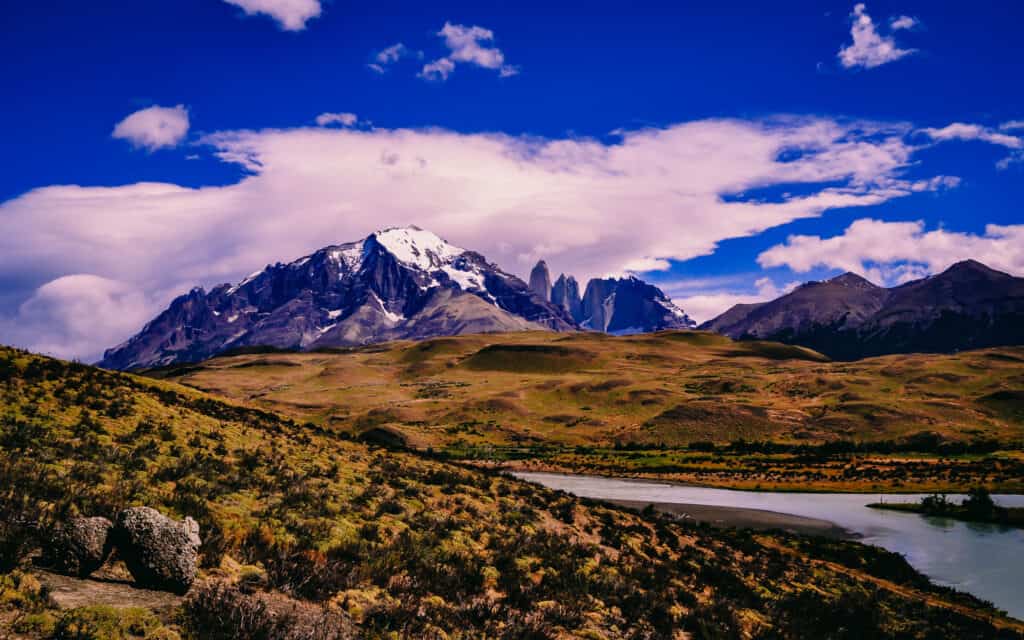Hike | Patagonia | Chile
Torres del Paine: The beauty of three granite pinnacles
Text | Anninka Kraus
Photography | Tobias Kraus

Chile Patagonia
The O circuit in Torres del Paine National Park is a terrific 7 night, 8 day hike in Chile best known for its Torres, three distinctive granite pinnacles.
We had ample time to fall into long term-travelling-mood, forget about work, and get excited during the 33.5 hours long odyssey from Zug in Switzerland to Milan, Sao Paolo, Santiago and Puerto Montt until we arrived at our B&B in Puerto Natales, Patagonia.
Bleary-eyed, in hiking garb, and shouldering backpacks we had reached the sparsely populated southern tip of South America on our second visit to Chile. We had decided on the 7 night, 8 day Torres del Paine O circuit, which includes the core W trek and adds three nights along the backside of the mountain range to complete a loop, sleeping in a tent not in refugios (Spanish for hut or hostel), and booked all campsites in advance.
I much prefer dragging my own equipment around the globe to the risk of bedbugs feasting on me in someone else’s smelly sleeping bag, however there are many places to buy and hire outdoor gear in Punta Arenas and Puerto Natales, and also supermarkets to stock up on food. Three companies run camps on the trail – Vertice Patagonia, Fantastico Sur and CONAF.
track details.
Torres del Paine National Park is located in Patagonia, Chile, at the southernmost tip of South America. You’ll find the best spots to explore on this Torres del Paine 8-day
Itinerary & Map
Day 1: Laguna Amarga – Seron – Distance: 16.5km, Time: 4:05 hours, Elevation: 527m gain / 452m loss
Day 2: Seron – Dickson – Distance: 16.7km, Time: 5 hours, Elevation: 469m gain / 619m loss
Day 3: Dickson – Los Perros – Distance: 11.2km, Time: 3:25 hours, Elevation: 536m gain / 222m loss
Day 4: Los Perros – Grey – Distance: 14km, Time: 7:30 hours, Elevation: 1061m gain / 1516m loss
Day 5: Grey – Paine Grande – Distance: 10km, Time: 3:30 hours, Elevation: 414m gain / 466m loss
Day 6: Paine Grande – Los Cuernos – Distance: 12.1km, Time: 3:50 hours, Elevation: 658m gain / 618m loss
Day 7: Los Cuernos – Chileno – Distance: 11.8km, Time: 3:40 hours, Elevation: 871m gain / 559m loss
Route: Chileno – Torres – Chileno
Distance: 6.6km, Time: 3 hours, Elevation: 676m gain / 682m loss
Day 8: Chileno – Hosteria Torres – Distance: 4.2km, Time: 1:15 hours, Elevation: 130m gain / 419m loss
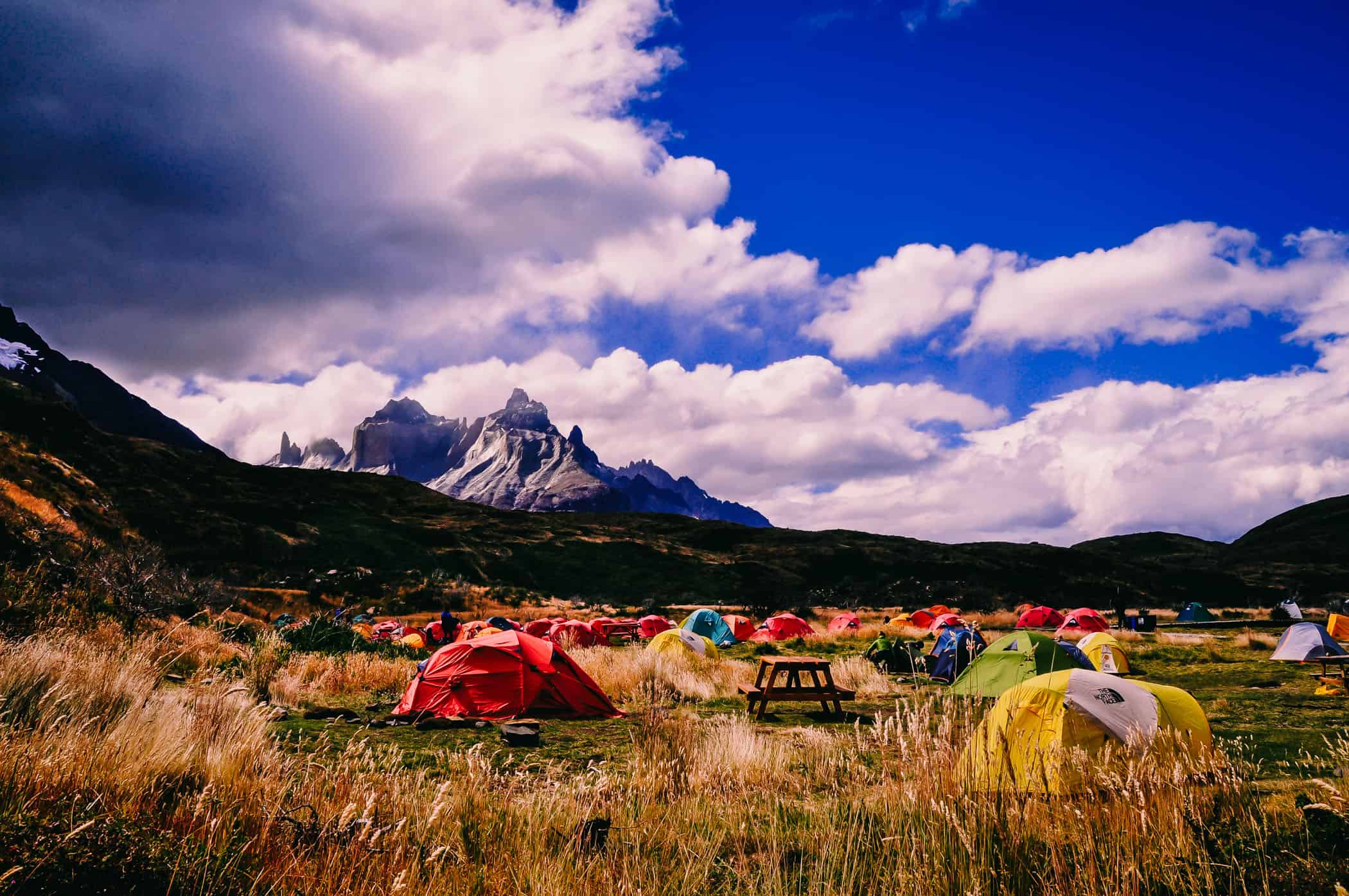
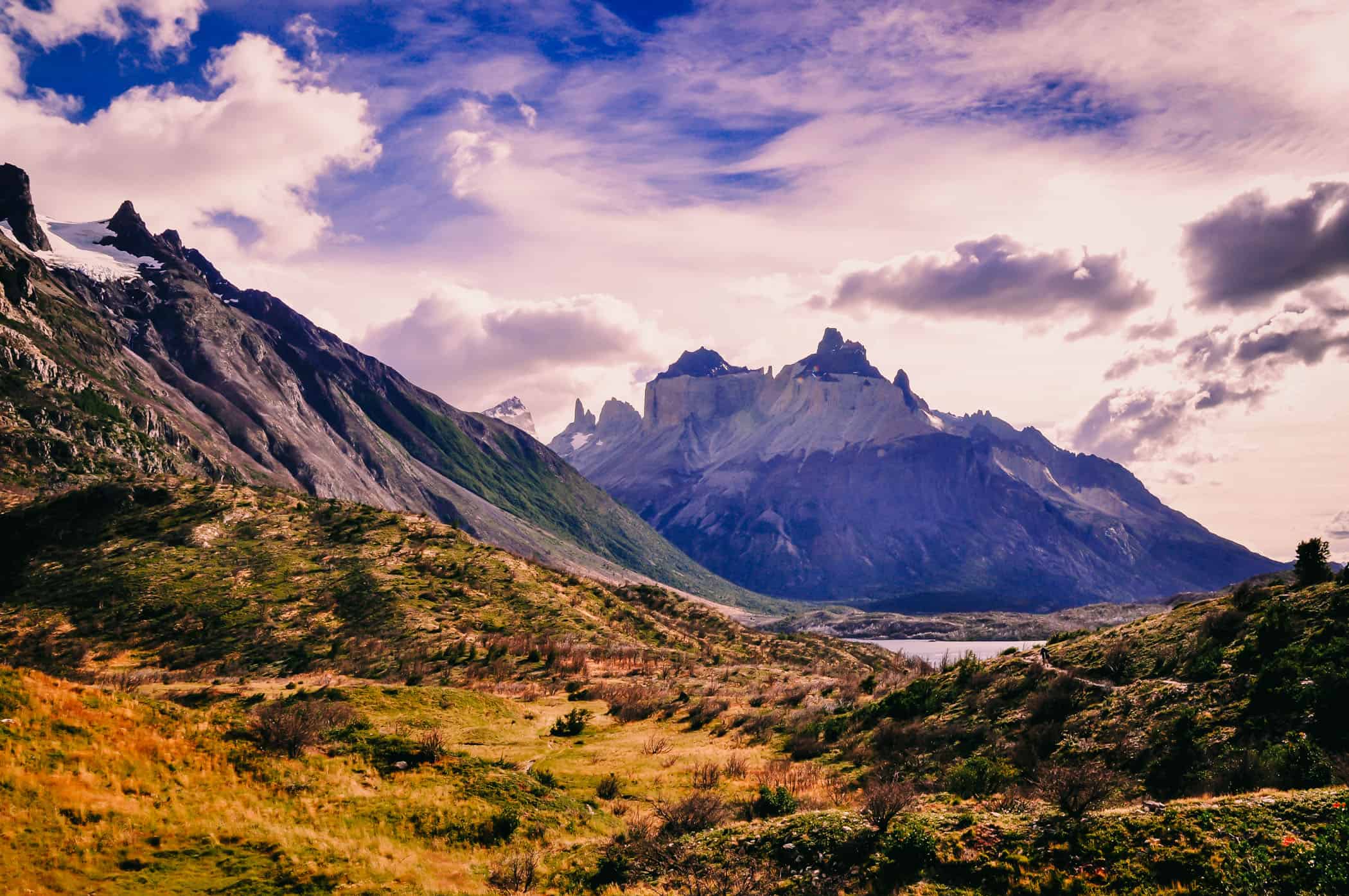

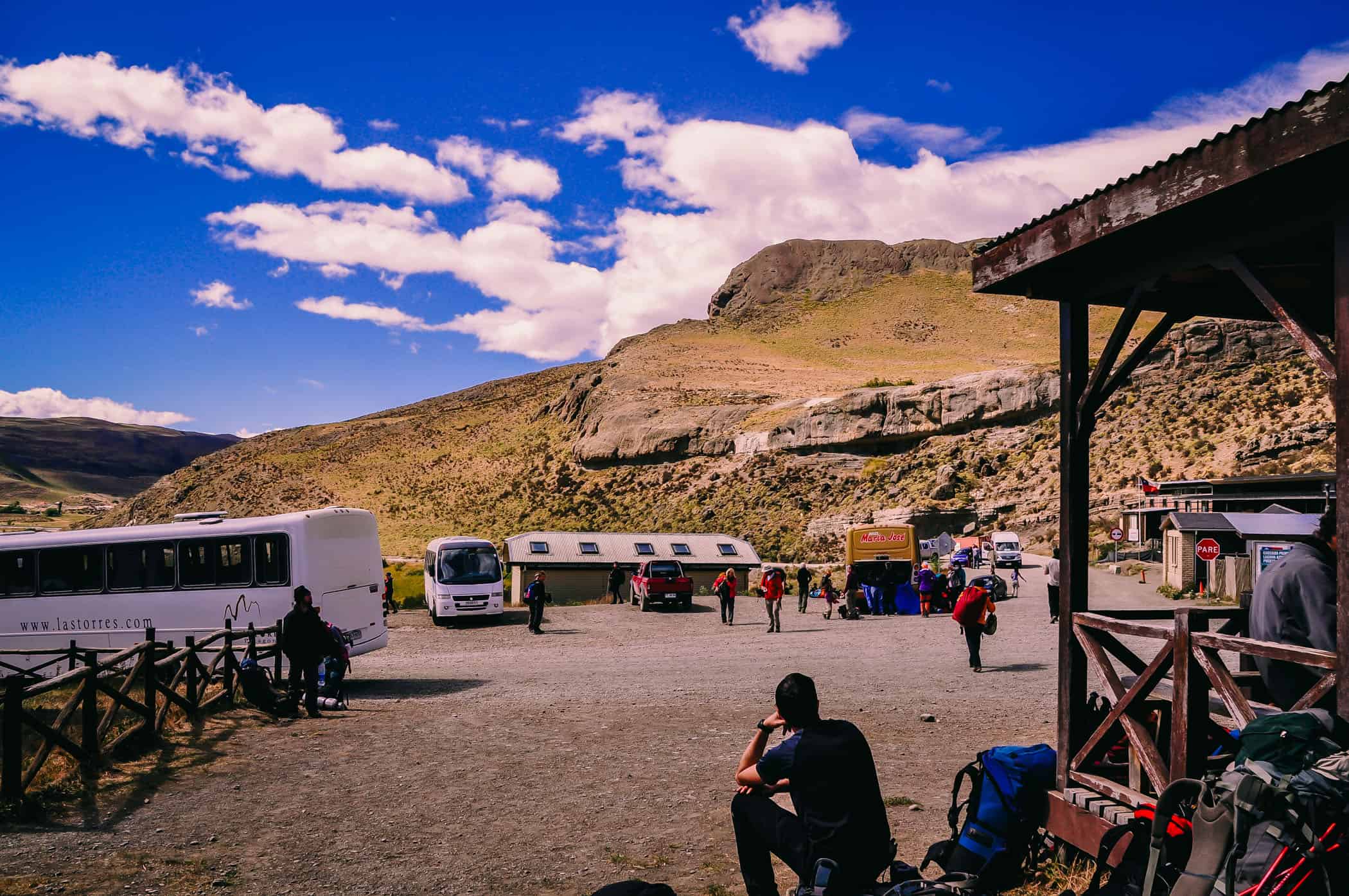
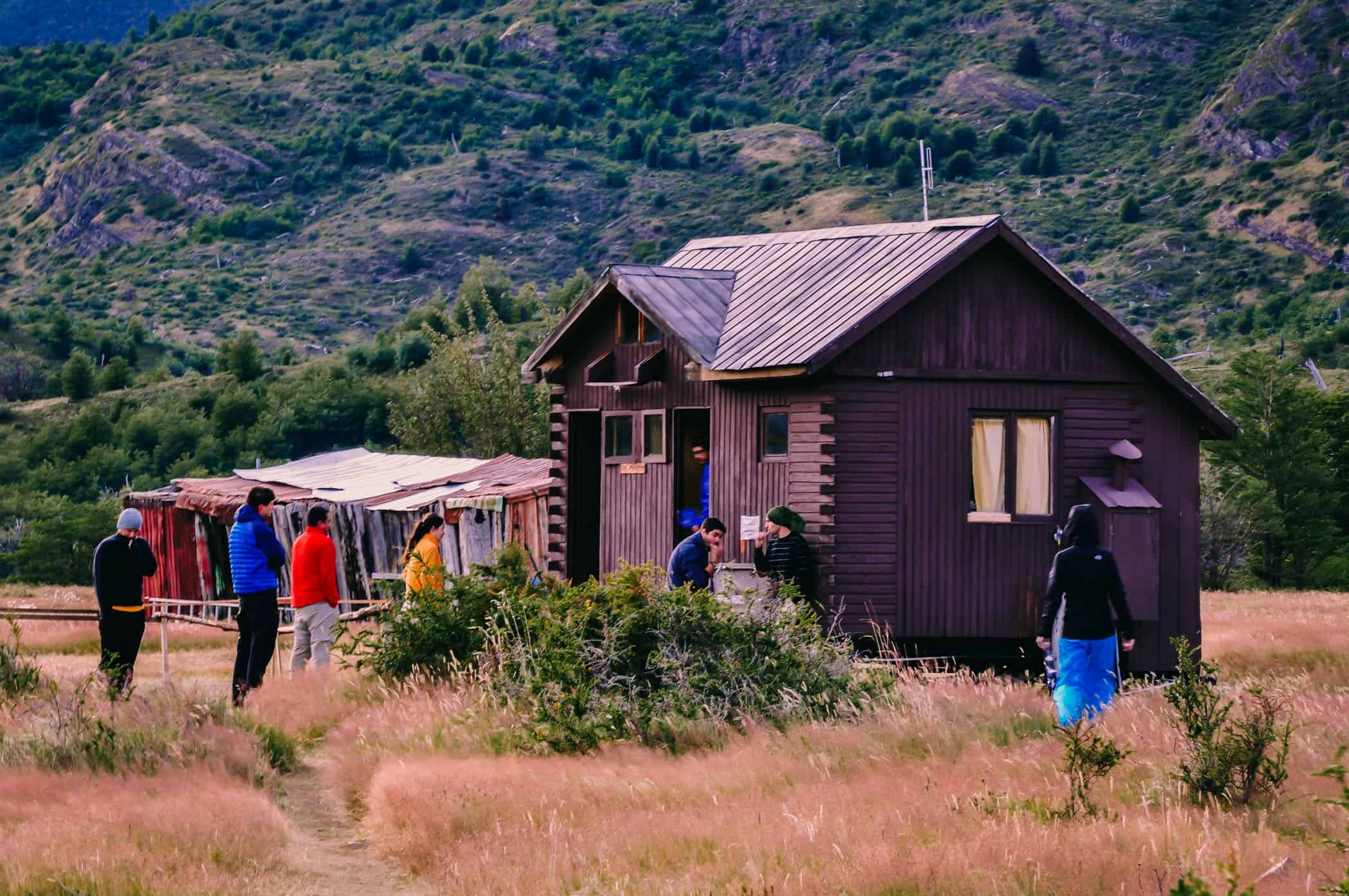
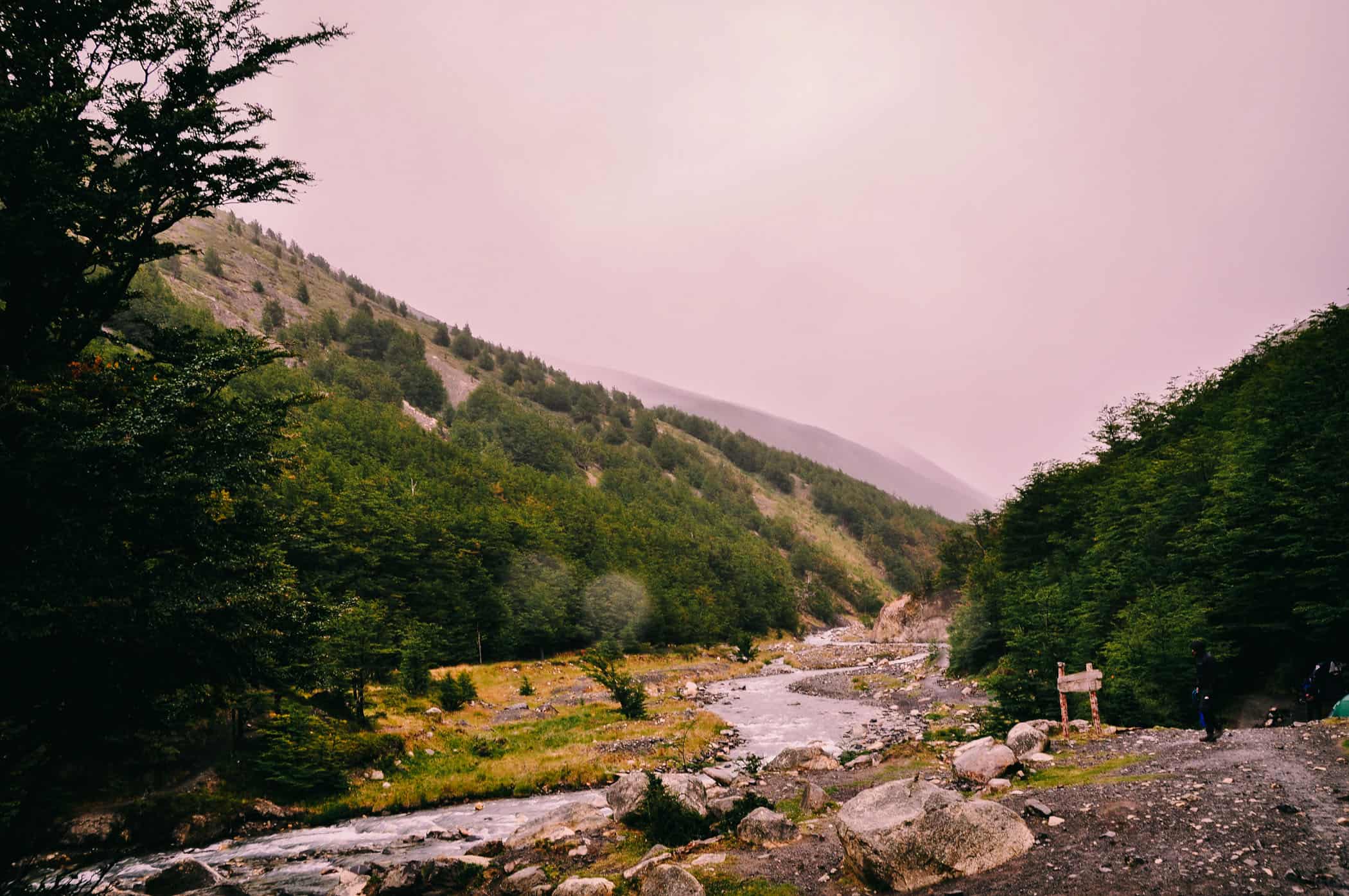
Torres del Paine hiking map
what to expect.
Three granite pinnacles rising steeply, the highest at 2850 metres, and at their feet a milky, turquoise blue glacial lake
The Grey Glacier wedged into the carved valley, the threadbare walls left and right, released by the glacier so very long ago
day 1
Laguna Amarga – Campamento Seron
The bus to the national park, heavily used on dirt roads by the looks of it, left at 7:30 the next morning. Every seat was taken by a diverse audience, yet altogether outdoorsy. Heavy backpacks were pressed into the luggage hold along with smaller daypacks and loose camping mats. Their sleep-deprived owners settled in the pillowy but grubby plush seats and gave in to the early start with a T-Shirt across their eyes, had breakfast, or curiously watched the changing landscape as it became rockier and more mountainous the closer we got to the park. A Muslim prayed, his head covered by a pink and green rhine-stone jewelled veil, while his neighbour, blond dreadlocks pulled up into a man-bun and barefoot, was furiously exhausting his prepaid data on the two hour bus ride before days without cell phone coverage.
We arrived at Laguna Amarga, one of the entrances to the national park, and still on the bus, were wordlessly handed a registration form, which we filled in, while a park ranger explained the registration process to a busload of foreigners in Spanish. She repeated the same in English, reading off a slip of paper with terrible pronunciation, but at least we understood that there are four steps required to enter the park: 1. Hand in the completed registration form, 2. Pay the entrance free to the park (18.000CLP/person), 3. Pick up a map of the park and 4. Watch a video that details the exact number of years in prison plus violation fees for various man-made causes of forest fires. This is surely a serious problem, especially in view of the devastating forest fires that have raged through the park and destroyed vast areas of land in recent years. But to assume all fires to be products of malicious intent (with prison sentences of up to five years), I thought was going a tad too far.
Having successfully completed the registration process, we dragged our backpacks from the luggage hold and shouldered 20kg and 17kg for the first leg. From Laguna Amarga we hiked a short distance along a gravel road, also frequented by minibuses and jeeps, and were happy when a hiking trail forked off to the right shortly after. Without noticeable inclines, the track wound through undulating grassland and blazing daisy fields along the Rio Paine (Paine River). We met only a few hikers and some horsemen, and drudged around the right-hand side of the park’s highlight – the Torres – three distinctive granite pinnacles. I was convinced we were battling gale-force gusts, worthy of the most serious weather warning. Luckily I was blissfully ignorant, that compared to what awaited me in the following days, it was but a mild summers breeze.
A light rain fell, and only a few rays of sunshine made it through, which oddly enough caused a serious sunburn on the back of Tobi’s hands. Campamento Seron was unpretentious. It consisted of a fenced meadow and a basic outhouse with two toilets and two showers for 80 campers. A small rangers hut served an equally unpretentious and thoroughly nondescript, albeit filling dinner prepared on a wooden stove at 8:30pm. After the hike I was hungry enough to eat my share of the vegetarian meal option – polenta with minced meat. Chileans seem to have a different definition of vegetarian. Luckily we had only booked two cooked dinners in advance. Shortly after, I was bundled up in my sleeping bag, red possum socks, icebreaker long sleeves, fleece, and hiding a pocket warmer. It still wasn’t yet dark at 10pm, which messed with our biorhythm combined with Swiss winter days ending at 5pm, jetlag and the time difference.
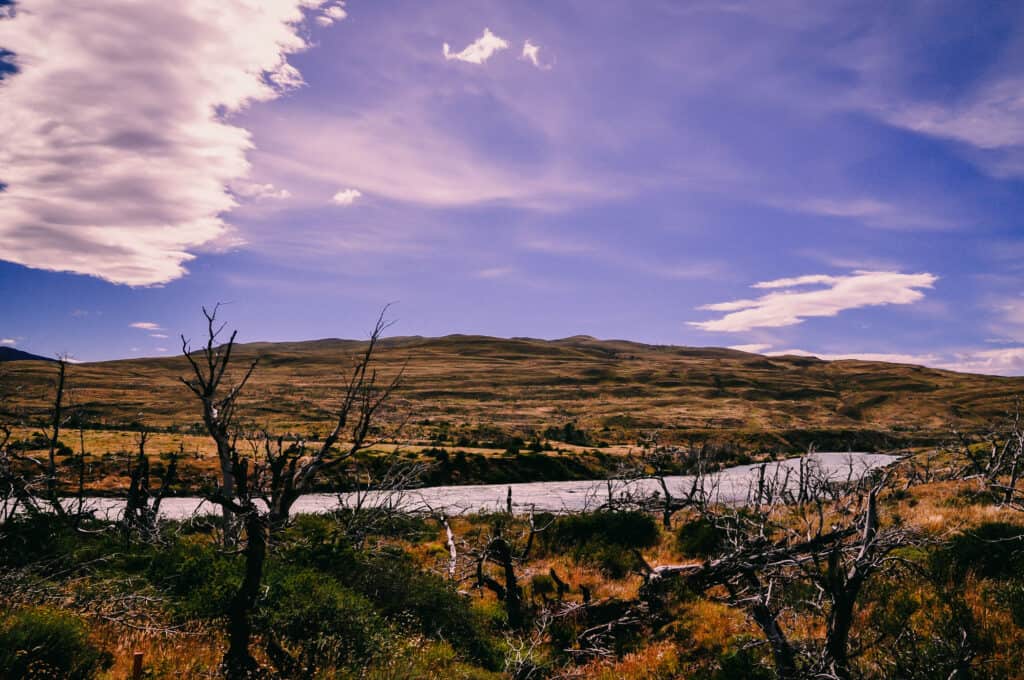
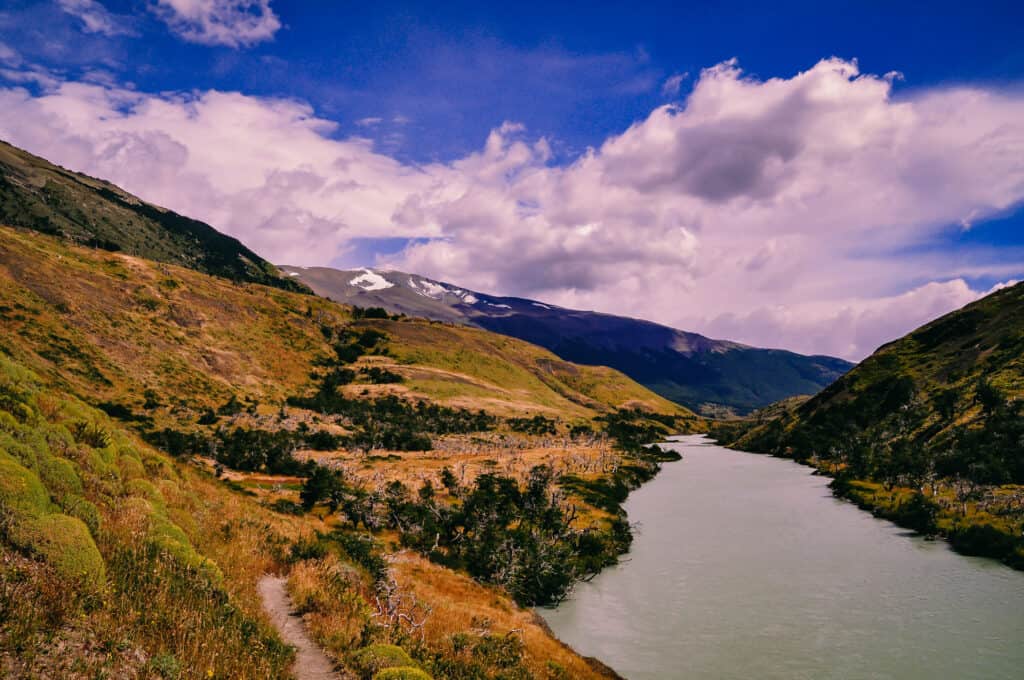
day 2
Seron – Dickson
The next morning, we woke to the crackling sound of rain on the tent roof, and it was still raining when we turned our headlamps off at Campamento Dickson that night. In between, there were only a few bright spots. But not too bright mind you, as there was no sun all day. During the first 18.5-kilometer leg rain hit us horizontally in the face, while the wind attacked our backpacks from all sides, rocking them back and forth in small vicious bursts. Just keeping my balance resembled a slack rope act. After climbing as little as 180m up a slippery rubble slope, I felt thoroughly wretched and condemned this from beginning to end unspectacular stretch of way.
In retrospect, my rather harsh judgement seemed a little unfair, but the grey veil of rain that concealed the landscape, revealing only the occasional mysterious shadow behind a milky shower curtain was simply too depressing. I drudged on in my soaked clothes splashing through puddles. On our way to the park guanacos, llama-like mammals, and Darwin’s Rheas (Ñandus) turned their heads towards the bus from the roadside but similar to other National Parks in the United States and Canada: once you’re in, the animals are out. Now the only animal we saw were flocks of brown and grey-white Magellan geese. Camp Dickson scored. There was a lodge with showers, freely available to campers, plus our tent site lay beautifully situated along the edge of the forest, protected by woodland from the worst of the Patagonian winds.
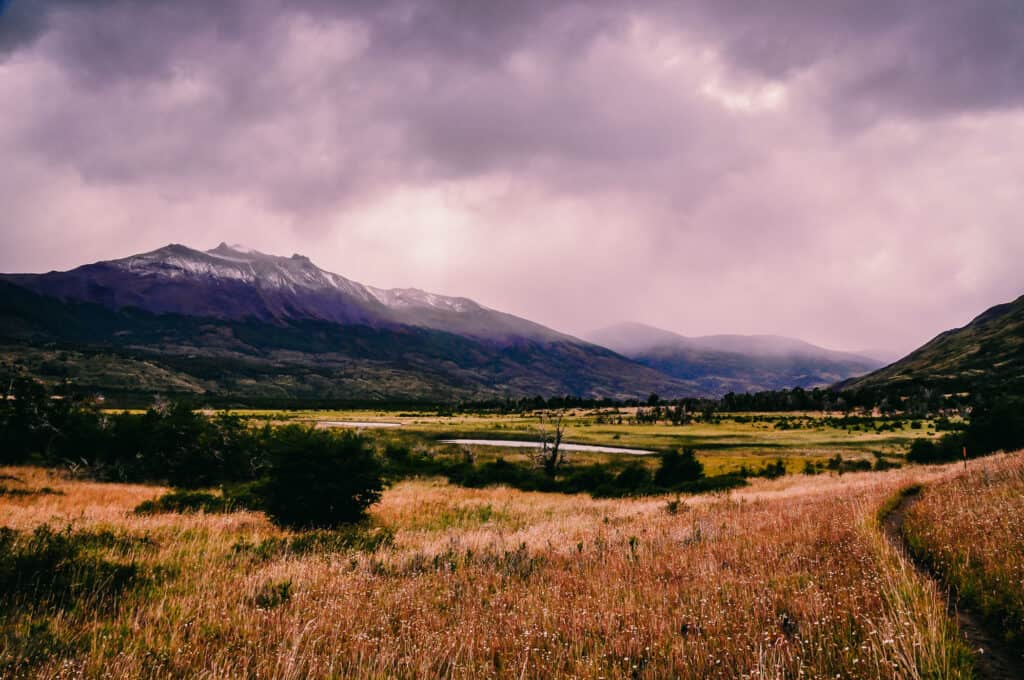
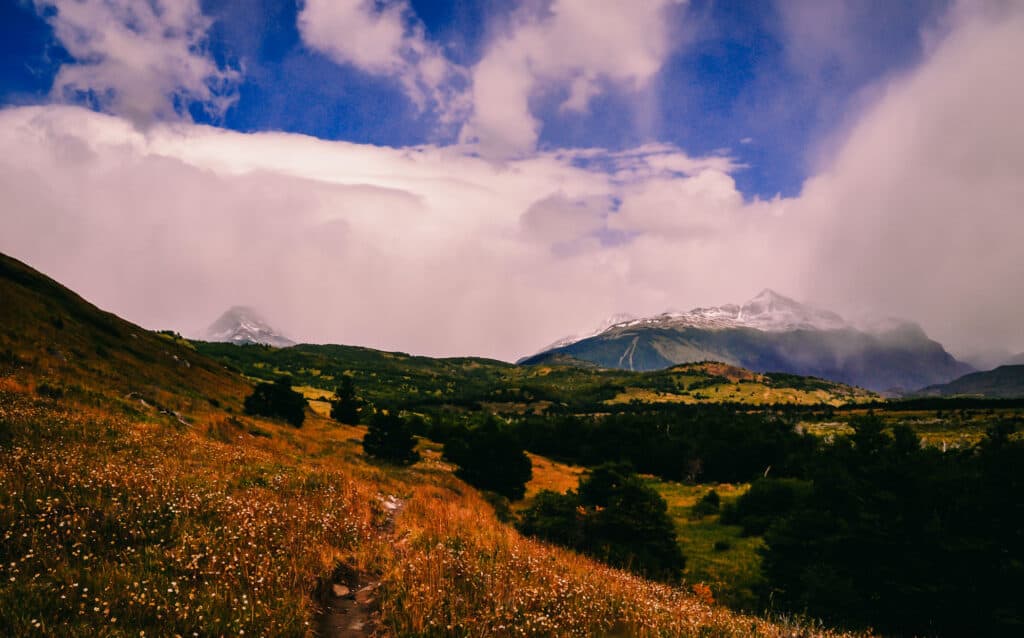
day 3
Dickson – Los Perros
Starting the day without heavy rain was an optical relief after my garish pink-turquoise waterproofs the day before, but relief was stingily limited to the absence of rain and rain gear, not the cold. I held my toothbrush with white, freezing, evidently bloodless fingers and shivered in gusts of frigid wind and drizzle. Rinsing my teeth with 5-degree cold water left me with a somewhat toothless sensation, and a vague recollection of my granddad’s false teeth floating in a glass of cleansing solution. In the tent we quickly mixed milk powder with water, squashing the little lumps against the edge of the bowl with a spoon, and pouring it over cereal.
Surprising how when you’re hiking nearly everything edible tastes good. I would probably come to miss milk powder lumps. The trail to Los Perros wound through forest and was much more enjoyable than the drudgery yesterday. Hardly any rain, and the sun peeking out for hours inevitably lifted our spirits. The views of Lake Dickson and its identically named glacier behind us were spectacular on the first stretch, as were Lake Perros and the glacier feeding this lake shortly before we arrived at Camp Los Perros.
A group accompanied by porters walked the trek alongside us. Their baggage was carried, their tents pitched, meals cooked and served on red table cloths with wine in glass bottles and folded napkins. I was still contemplating whether to feel jealous of their comfort or not, when in the evening we shared the tiny common room slash kitchen with 50 other campers and were exposed to 20 minutes of mindless, petty hostel jabbering of this group of 40+ year olds. Decided I was not in the least jealous of their comfort and the company it implied and even pitied their porters for having to listen to the nonsense for days.
Los Perros is hidden in the forest along a riverbank, and we regarded ourselves lucky that it hadn’t rained today, as the tent sites would otherwise, without a doubt, have been very muddy. The forest floor was soft, and the trees protected us from the ever present wind. A great place to set up camp for the night, except that the two toilets in the amenities shack clogged up for good shortly after dinner. The camp warden, who usually sits in the mini-market, a 2mx2m big shed, collecting campsite fees, and selling Snickers and Coke, was down on all fours in a most honourable attempt to clear the drainpipe. We brushed our teeth and washed our dishes in the river, facing the pass that we wanted to cross the next day, trusting it would be an equally rain free day.
Two hikers that we met in the hostel in Puerto Natales told us of some trekkers that had to postpone their crossing a few days ago due to six inches of fresh snow. It didn’t look like snow that evening, and only a few orange glowing fleecy clouds hovered around the mountain range, illuminated by the setting sun. We cowered on the riverbank, shivering, and rubbed dishwashing liquid into enamel bowls, watching the fading sunlight throwing long shadows on the riverbed. What sounds like a calm, quaint idyll was in fact surprisingly raucous, for we could not distinguish between the rush of water and the noise from the powerful gusts that ripped through the scrubby, thorny bushes and forced them, with enormous, uninterrupted strength to grow bent downstream.
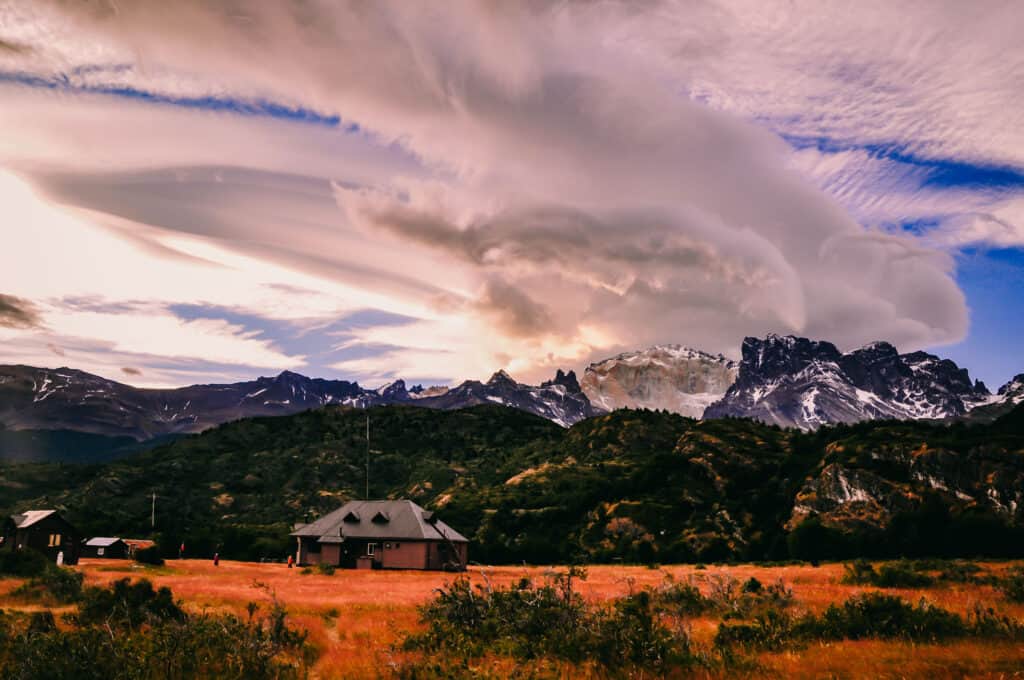
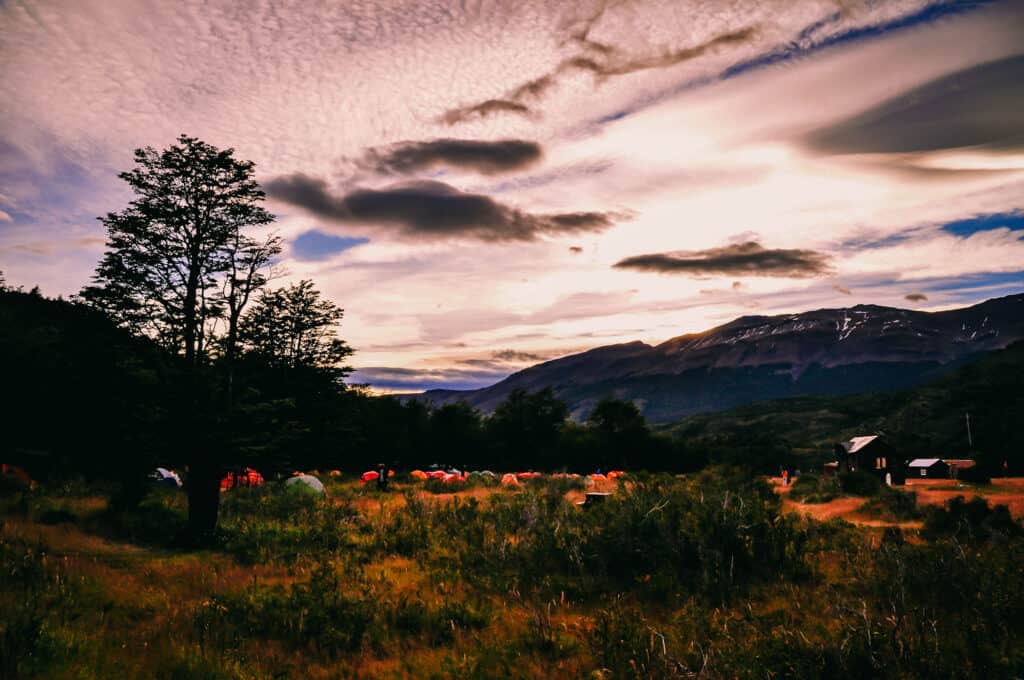
day 4
Los Perros – Grey
We set our alarm for 5:30am but woke to a completely dark and quiet campsite. Resetting the alarm for 6am, we reminisced about dragging ourselves out of chilly sleeping bags at 4am along with everybody else for the crossing of the Thorong-La-Pass in Nepal to master the long haul to Manang by afternoon. Things were a little different here and when we finally set off, we were still among the first to leave, heading out on the three-hour march climbing 600 metres to John Gardener Pass. We didn’t see a single cloud all day in the baby blue sky, an event possibly unique for this park. It seemed that unlike my expectation it was not the cold pushing me to my limits that day, but rather the terrain over the 21km stretch, estimated to take 11 hours.
The first part of the way was mercifully level, leading through Patagonian rainforest, a little muddy, until the slope increased, and we approached the rim of a moraine, sediment left from a glacier where it carved its way a long time ago, that would take us all the way to the pass. Scrambling uphill on boulders and coarse gravel we marvelled at the dead calm. Without the hissing and whistling of the vigorous gusts of wind, the rough environment seemed much tamer and suspiciously tranquil.
Even on the crest only a light breeze blew, and the giant mass of Grey Glacier lay in front of us. Wedged into the carved valley the threadbare walls left and right, released by the glacier so very long ago, keep the bulk of ice under control. The surface was grey and black where the wind deposited dust and sand. In shallow cracks that permeated the surface, like a cracked open cheesecake crust, the ice gleamed whiter and purer. In the deep crevasses and along the escarpment it glowed in the colour of Ice Blue Mint Coolers, a very light, piercing blue which seemed crystal clear and pristine from a distance, as if the glacier had just revealed a glimpse of the ice after hiding and compressing it under enormous pressure for millennia.
„Paine“ which means baby blue in the language of the Tehuelche-Indians sparkled today both in the sky and the eternal ice. The steep descent, much worse than the ascent, was an ungainly scramble, leading first over the rocky surface of the glacial sediment and then down a forested slope. Why is it that in nature steep ascents condemn you to ferociously arduous descents? But it got worse. Next, we had to cross two ravines on ladders, climbing vertically down and then back up again on the other side, my shaking leg threatening to slip on the rungs. I vowed never to cross a ravine on ladders again, much less without a safety harness, and a 17kg backpack on my back. We continued downhill on the rain-slickened path for hours, a wearisome slog that reduced our legs to floppy fish fingers, tripping over branches, and our arms the jelly dessert trying to compensate for our stumbles with the hiking poles. Just how much we used our arms to stabilise we realised the coming days when we could hardly straighten our triceps.
I doubt I would have managed to reach the camp that day had it rained or the wind picked up. In the genial good weather, we hiked to Campamento Grey, the first campsite on the W trek, in 8:45 hours, including some short breaks. For the first hour after our arrival we lazed in the sun under bright blue skies, beat, and inhaled two chilled cokes. I queued 45 minutes for a shower, so happy to be standing not walking, that I excused the imbecile who had installed an equal number of ladies and gents showers. Was it worth it, adding these three additional days of the O-circuit to the W trek? Yes and no. The landscape wasn’t all that spectacular on the first two days, mostly influenced by the unpleasant weather of course. It’s worth considering starting off from Camp Grey with a daypack and hiking to a viewpoint halfway up the pass from where we had a great view of the glacier. On the other hand, there are fewer trekkers walking these first stages, and we had an even greater sense of seclusion.
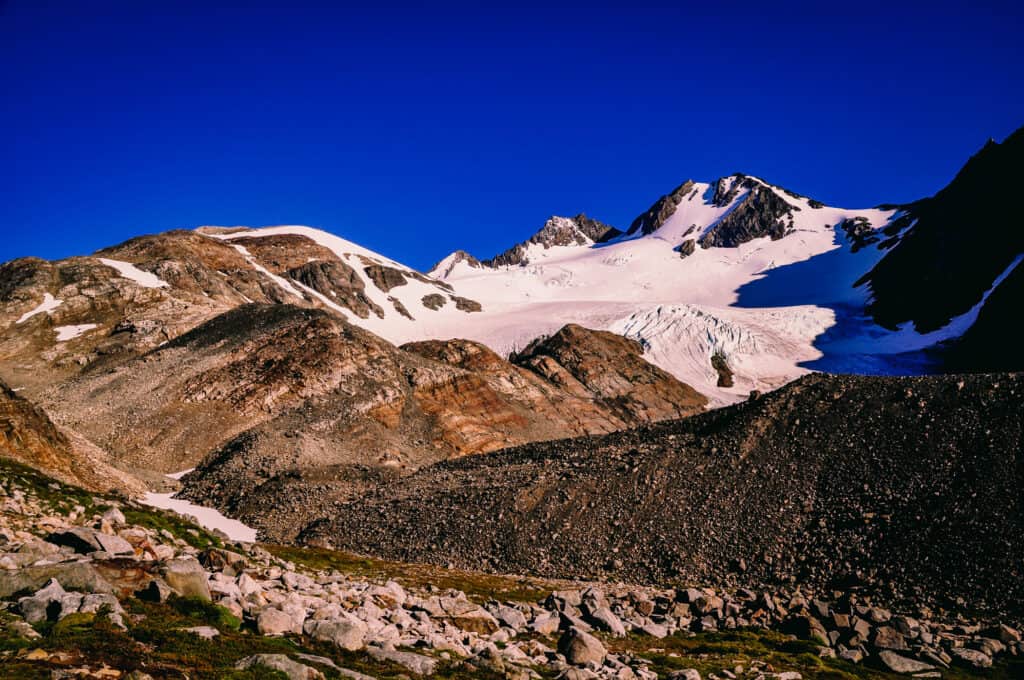
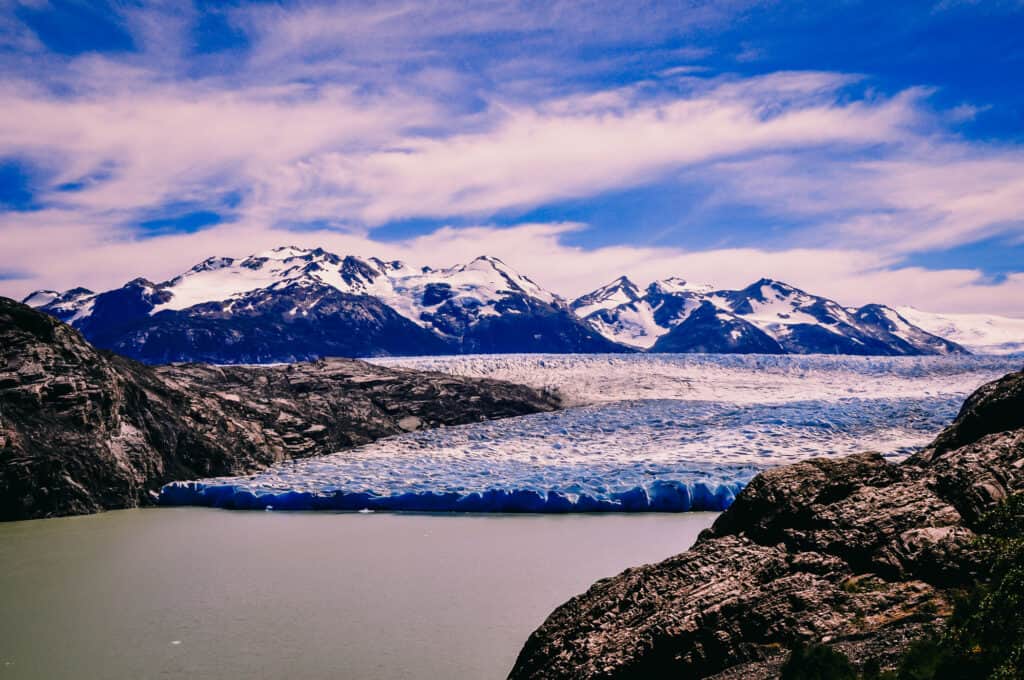
day 5
Grey – Paine Grande
From Camp Grey we set off across a hillocky steppe for 11 kilometres along Lago Grey to the Refugio and Campamento Paine Grande. During the next four hours, we were yet again surprised by the every whim of a temperamental day in April: sunshine that burst through the heavy cloud cover, cold gusts of wind, and scattered showers that hailed down on our pants from behind. The next cloudbank gathered just in time for dinner. It was abundant with rain, and for the following hour large drops beat down on our tent roof with the annoying persistence of drumming fingers. Our guide book mentioned this campsite as being, ‘located behind a hill, and very well sheltered from the wind’ – which made me wonder whether the author had indeed missed the sleeping bags, mats and jumpers dancing across the brownish grassland at lightening speed and uprooted tents.
Our tent frame was permanently deformed by the strong gusts and threatened to break. When the wind finally eased off, a treacherous calm let us momentarily hope that the setting sun had lulled the gale as on most evenings. But, only minutes later a hurricane-like gust swept across the colourfully dotted grassland. Flysheets went dancing, swirled around by invisible hands, and tents flattened to the ground, flexible as the tufts of grass. The insidious drizzle eased to reveal a storm tossed yet wonderful panorama of the camp in the fading light. Brushstrokes of red, yellow, and green bled across the sky, the horns of Los Cuerros in the background.
Paine Grande makes the outdoor-experience accessible to day tourists who cross Lake Pehoe from the Cafeteria Pudeto (accessible by car and bus) on catamarans in half an hour. The day tourists are easily distinguishable by handbags, trolleys and classy down jackets. A very different world next to the campers queuing for warm showers with fifteen others – a parade of polyprop bottoms featuring white sweat marks like badges of honour.
We hovered over tiny camping stoves cooking pasta and hard-boiled eggs together in the same pot, intermittently diving for towels that tore off makeshift clotheslines with the wind and sailed across the beige plains like small kites in the gathering dusk. Unfortunately cooking is only permitted in tiny, plain shelters, little more than shacks, on all campsites other than Seron due to the fear of bush fires. This diminishes the camping feeling and joy of cooking and eating outdoors somewhat. And of course dozens of campers were hungry and eating at the same time, cramped onto basic wooden benches, while the queue for the only sink to rinse dirty dishes got longer, and the smell of food more intense. A group of Japanese were soaking dried fish (an atrocious stink) and Italian gourmets roasted onions (who carries onions for days but true gourmets?) to refine canned tomato sauce. It was very cosy though and too cold to eat outside anyway.
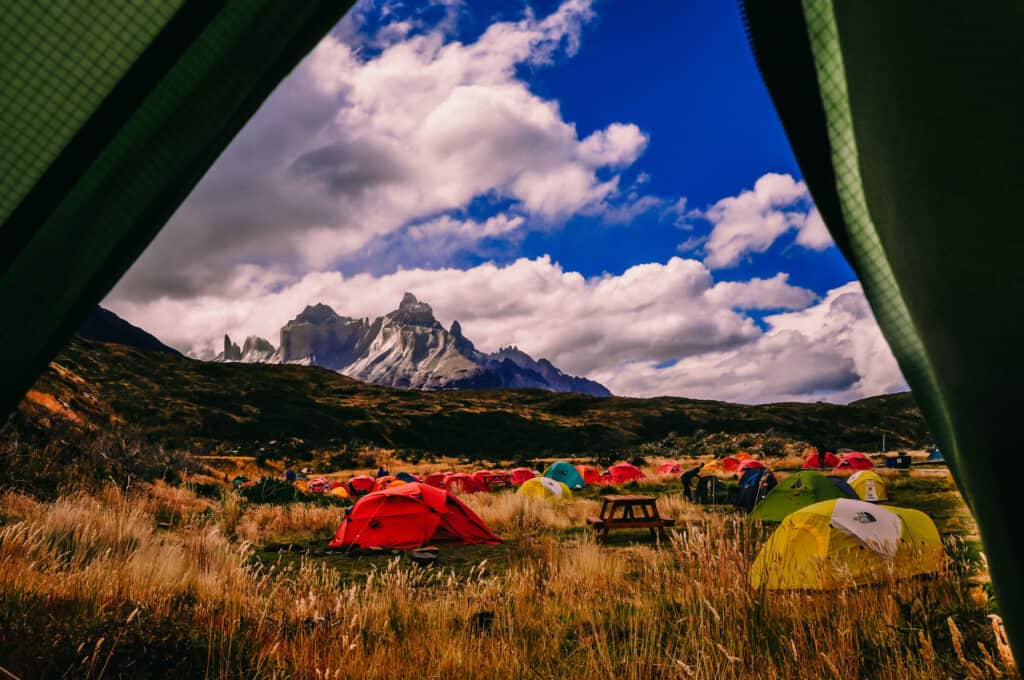
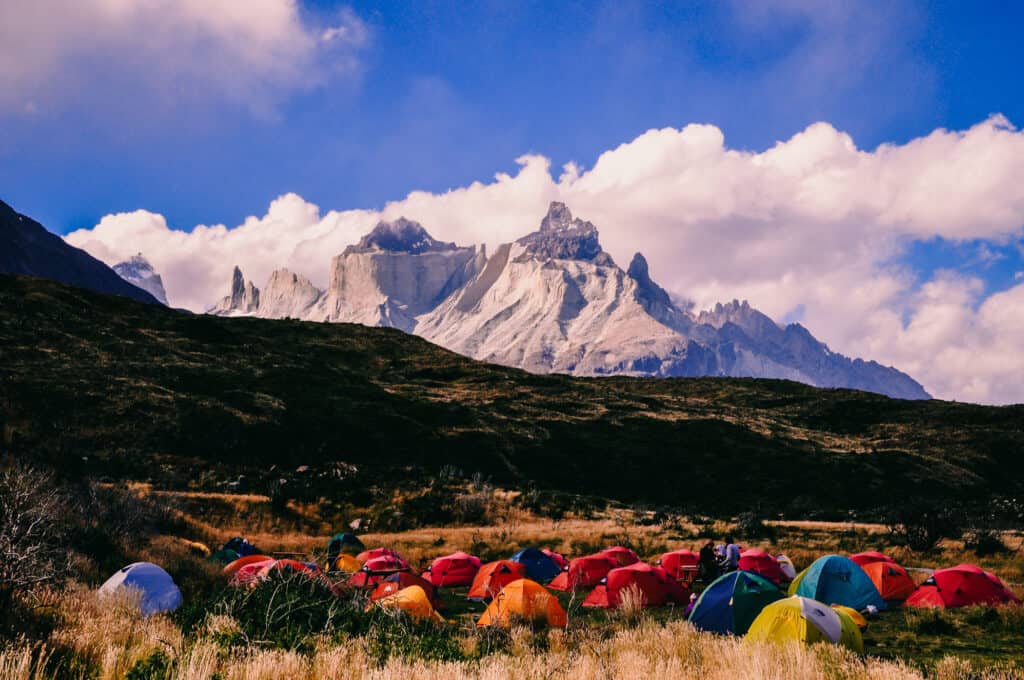
day 6
Paine Grande – Los Cuernos
Our original plan for this leg of our journey was to hike into Valle del Francés to Mirador Britannico, and then on to the Campamento Italiano. That would however have entailed hiking to Campamento Las Torres at an elevation of 600m with our packs the next day, where camping is only permitted with prior reservation, which we had not been able book online. Too much of a risk we decided, and thus skipped the Mirador, hiking to Los Cuernos at a more leisurely pace than originally anticipated.
The first few steps up the French valley, Valle del Francés, where we crossed the raucous Rio del Francés on a suspension bridge, offered the most spectacular scenery of the Cerro Paine Grande with several hanging glaciers. Los Cuernos Refugio was the nicest so far, and we looked forward to a cooked dinner in the cosy warmth. The weather was nice enough to enjoy the small sundeck, and I wished we could have had dinner outside. Inside, the noise level rose considerably shortly after 7pm, decibel by decibel.
The excited cackle of fifty hikers, planning upcoming days, and recalling adventures of the last, competed with the clatter of dishes from the kitchen, until the air, heavy with the smell of pasta and chicken drumsticks, shampooed hair, and smelly socks seemed to vibrate at 30 degrees Celsius. That night we had to pitch our tent on a wooden platform situated on a sloping hillside. The individual plots were nicely hidden in the thicket, and we were unable to estimate the number of tents around us. It rained continuously through the night. Water collected on the tarp we had spread out on the platform to protect our slightly leaking tent floor, and we woke the next morning on drenched mats, and floating in sloshing puddles (note to ourselves: buy a new tent, we do not want to practice paddle boarding in this tent again).
We got little rest, partly due to the permeating cold and dampness resulting in constant shivering, plus some late arrivals that seized the platform next to ours at 10pm. A group of Chileans commented loudly it seemed on each individual nail as they took over an hour to pitch their tent. They then settled in and continued partying well into the night. Sleep was impossible, even with earplugs. After the second night with a party tent less than five meters away, thoroughly chilled and fatigued, I silently cursed our otherwise lovely Chilean hosts for being noisy and inconsiderate.
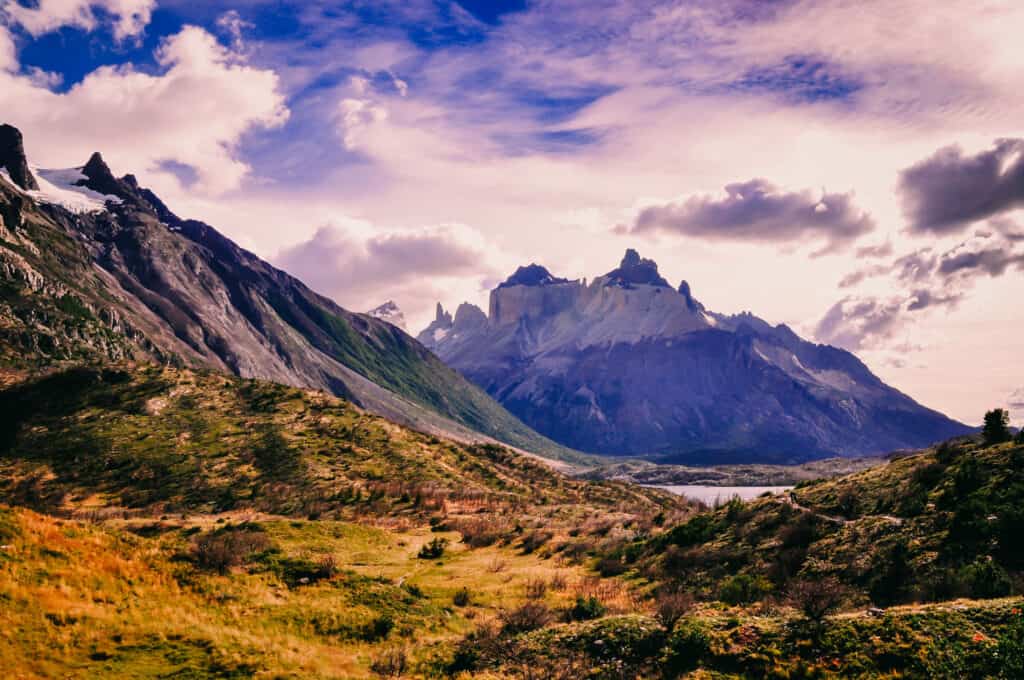
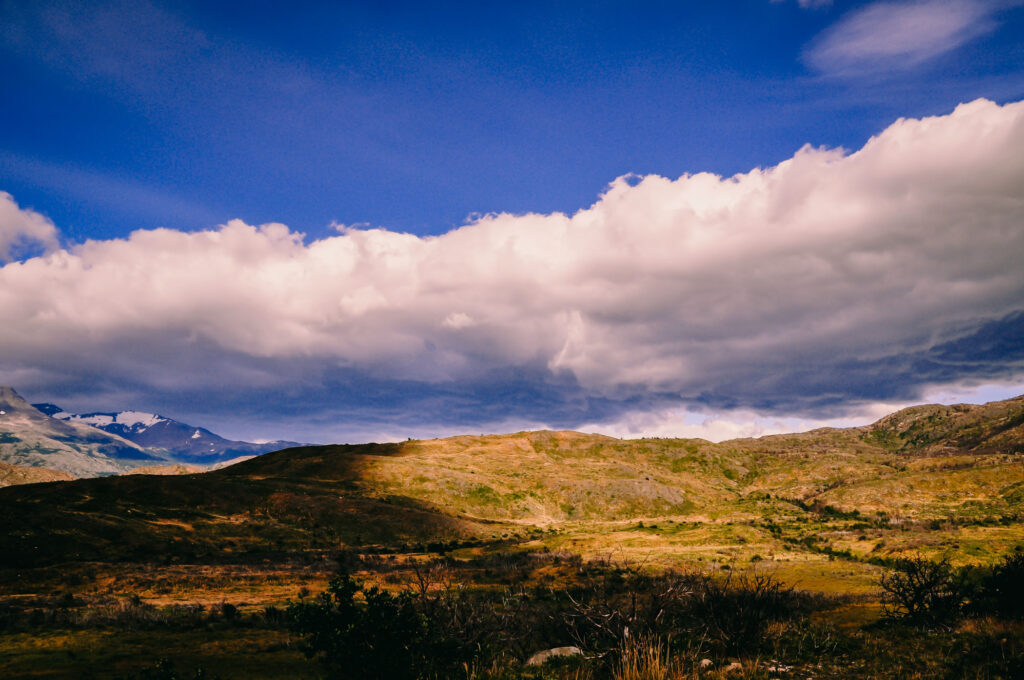
day 7
Los Cuernos – Campamento El Chileno & Chileno – Torres – Chileno
It was a damp and sullen early start to our last full day in the park. Instead of hiking to El Chileno and calling it a day as planned, we instead decided to get to the campamento early, pitch our tent to dry off from the previous night’s soak, and climb the Los Torres with only a daypack. The weather to see the park’s highlight was near perfect, and today we were spared from rain. The sun and drifting clouds took turns in the sky, our backpacks rocked by the wind, as we took the last stony incline pressed close to the rock face. After the fork, where the shortcut we took from Los Cuerros to Chileno meets the path to Hosteria Torres, we again encountered day tourists, some stumbling along in elegant loafers and lifestyle sneakers and shouldering daypacks of astronomical proportions.
We reached Chileno in just under three hours. The refugio huddled against the right side of the valley between woodland and the Ascencio River as if to hide from the piercing wind whistling up the narrow valley without pause. Liberated from our heavy backpacks the climb was a walk in the park. The level footpath up the Ascencio valley wandered through trees on a bouncy forest floor and across wooden bridges. When the path climbed steeply, crossing the Morrena Acarrea on slippery gravel slopes, we passed families with small children, South American teenagers on their school holiday, and some hardened hikers struggling up the moraine with big packs in a maelstrom of day tourists.
After a 90-minutes climb, using our hands as well as our feet to scramble up the steep rock face, three granite pinnacles rose before us, the highest at 2850 metres, and at their feet a milky, turquoise blue glacial lake. Clouds hurried past, painting white fluffy streaks on the blue sky, a breath taking composition in mid-flight, in shades of white, grey, and blue. Despite the otherwise bearable weather and a magnificent view, nipping winds pushed us on after thirty minutes. Nearing the end of our stay, we agreed that the unrivalled feeling of freedom and seclusion in harsh, unspoiled and surprisingly diverse nature was well worth the journey of nearly forty hours to one of the most remote parks in the world. We’d fought piercing Patagonian gusts and freezing-cold rain stinging our face for the most extraordinary views, a sense of achievement, and of course the lovely sunshine that we came to appreciate so much here. The last remark is to be taken ironically, but I dare say the weather could have been even worse.
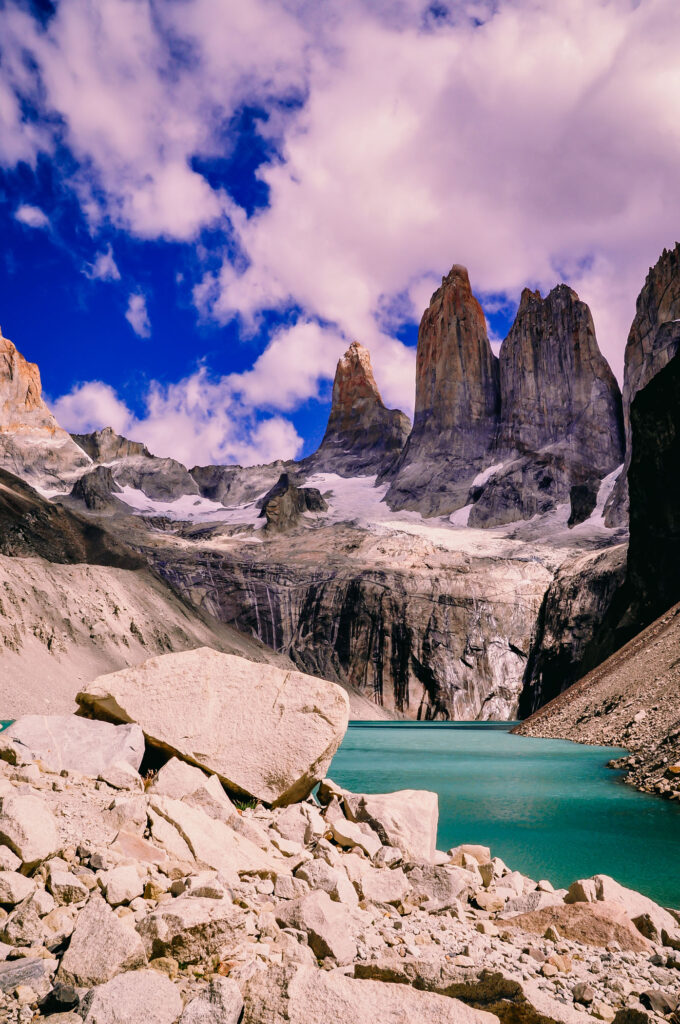
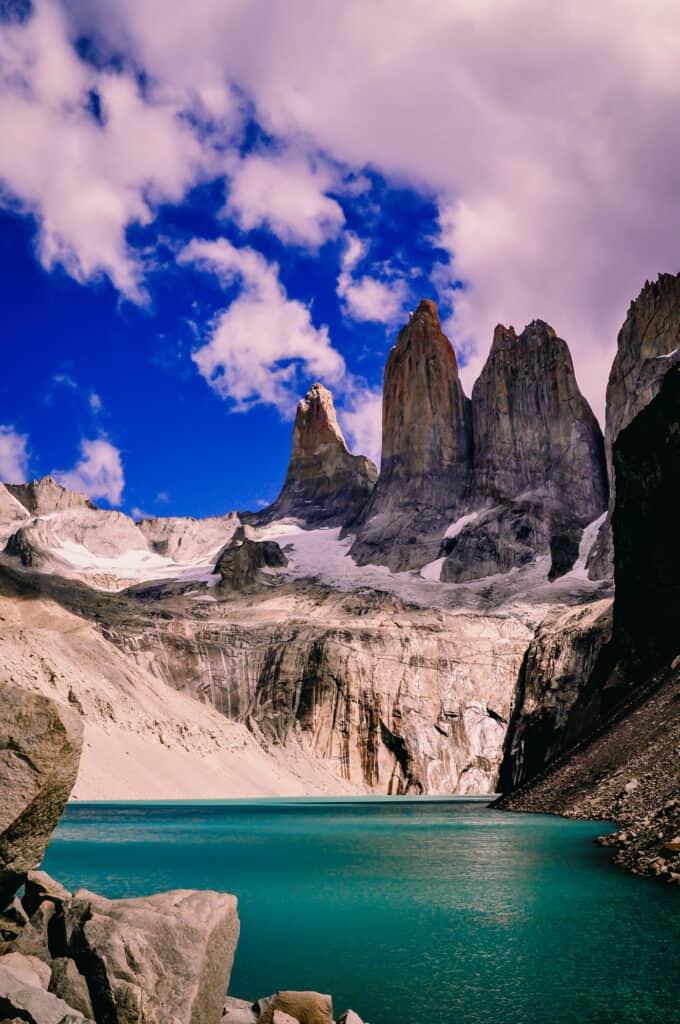
day 8
Campamento Chileno – Puerto Natales
We slept in until 7:30 and started our last day in Torres del Paine National Park in a now familiar morning routine, a little wistful already but very happy to have seen the Torres the day before. There was no evidence of sunshine or cotton-wool clouds puffing up in the sky this morning, and the entire Torres massif seemed to have disappeared, armour-clad in charcoal grey rain clouds. Certainly no pleasure for the brave who had chanced the climb at 5am for a sunrise that would be delayed until noon. The pea soup fog was so thick that we couldn’t even guess the silhouette of the surrounding rock walls. At the start of the 1.5 hour long descent it was cold and damp, and my fingers went numb despite my gloves and using poles, but later in the valley down below, we were flooded in sunshine. As the heavy mist around us lifted we didn’t need our woollen hats, gloves, or scarves for the remainder of the hike.
Arriving at Hosteria Torres, the only hotel of its kind in the park, it took but one look at the clientele then our mud-caked boots to feel thoroughly out of place. We decided to wait for the shuttle back to Laguna Amarga outside on the grass. At 1pm we were taken to the park entrance with a small busload of hikers, where we waited another hour for our bus to Puerto Natales, one of at least a dozen bus companies that collects hikers at 2:30pm each day.
Thus ended eight days hiking through Patagonian plains, rain forest, rocky slopes, and ankle-deep mud. Past glaciers, lakes, milky turquoise lagunas, and icy, grey glacial water torpedoing through chutes in what have been some of the most extraordinary panoramas all around. Scenery so diverse and volatile, where furious gusts of wind whipping all around us, was followed only minutes later by bright sunshine briefly evoking thoughts of a relaxed beach holiday in sunnier climes. On the bus nearly everybody fell asleep, too tired to watch the grazing guanacos by the side of the road.
